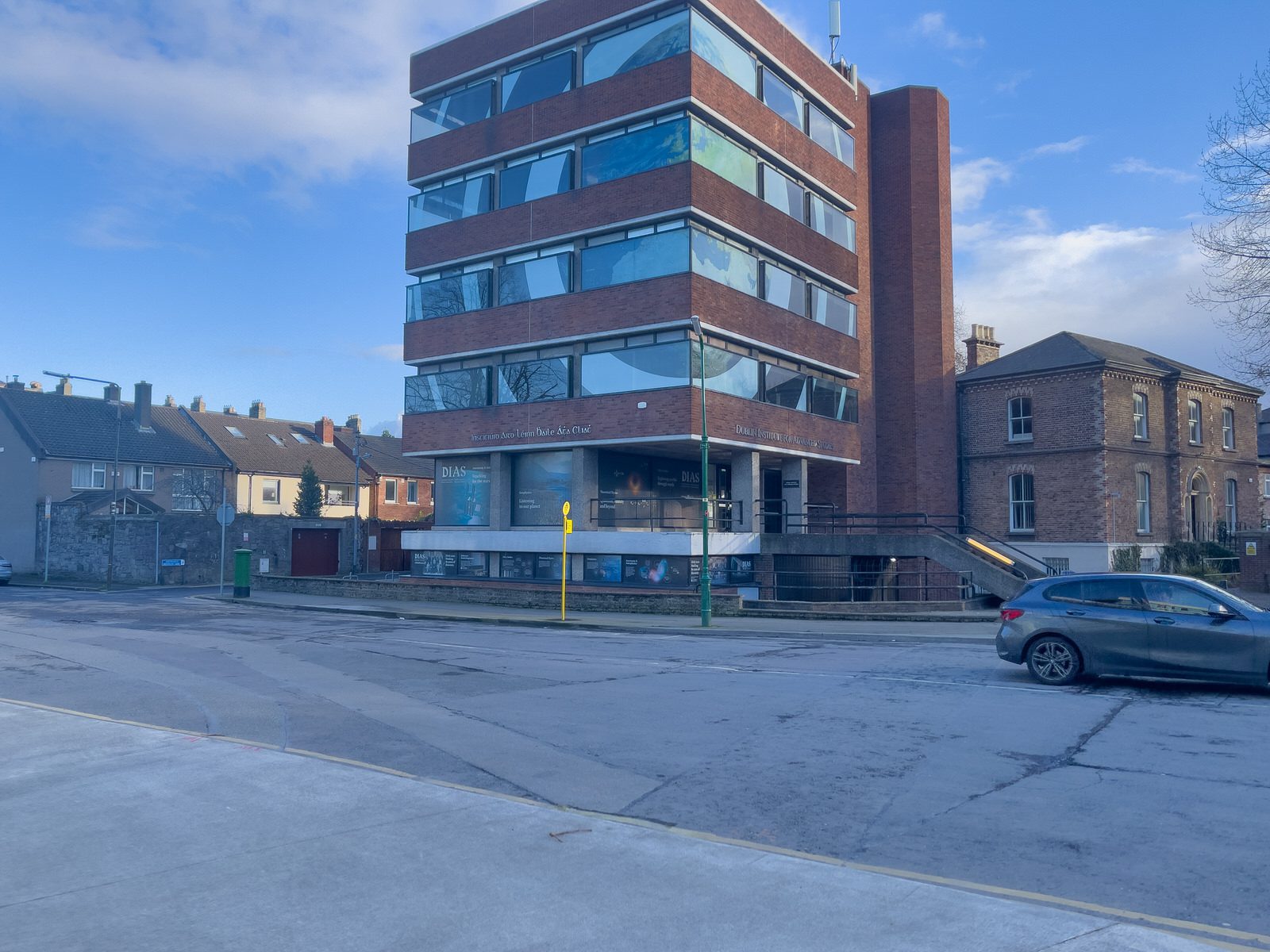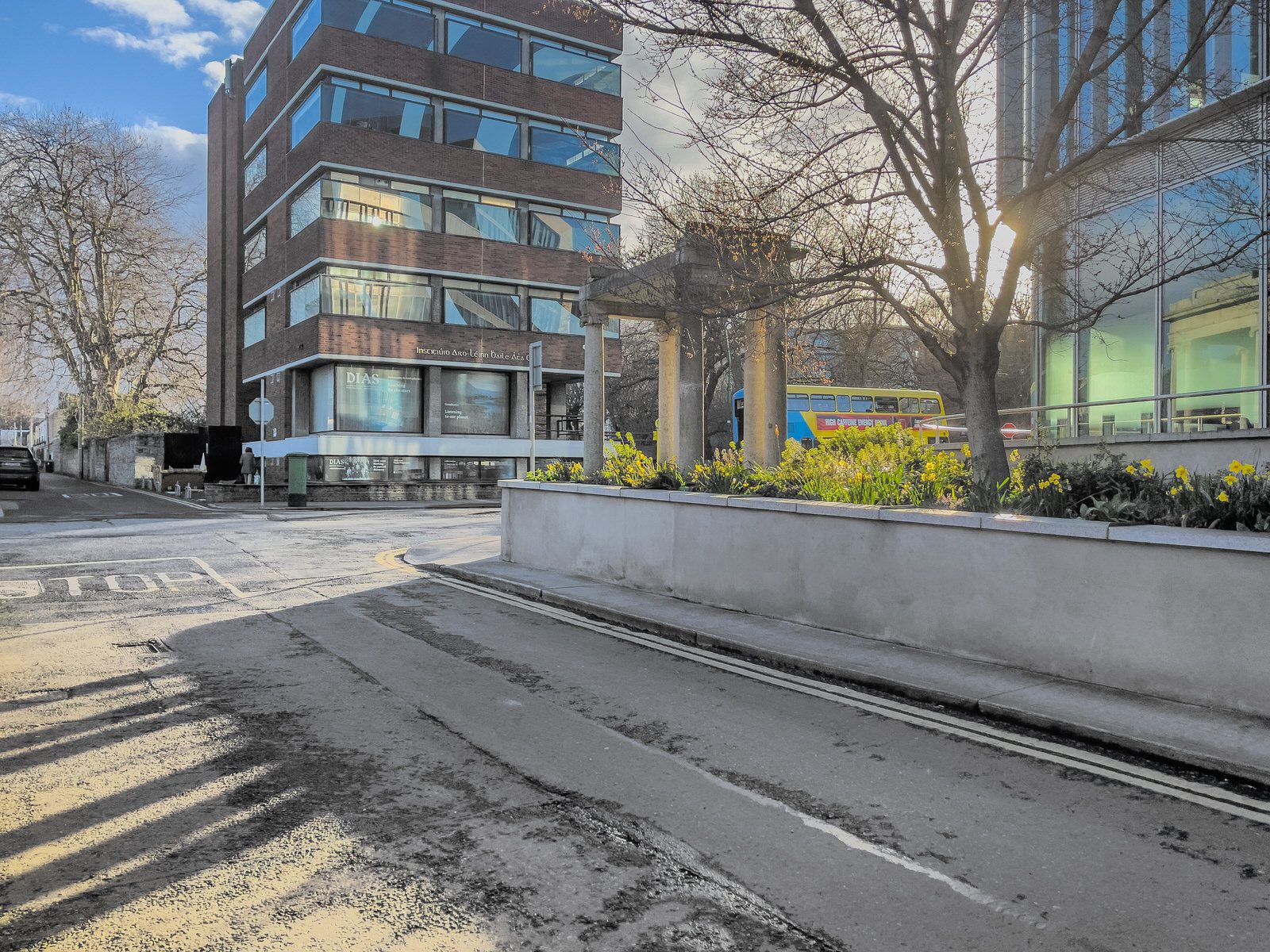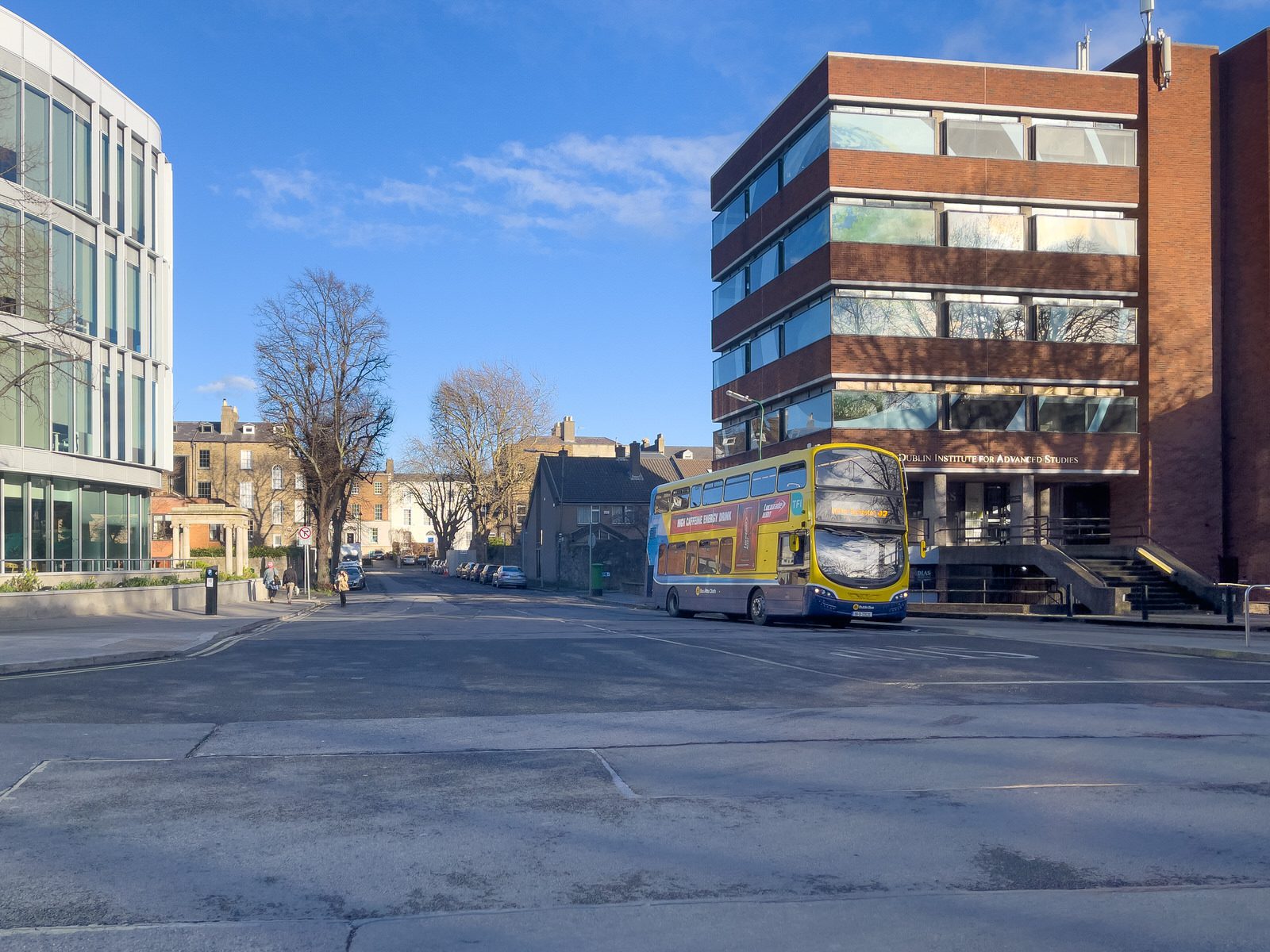HAVE ARRIVED IN CAPEL STREET
Capel Street Update! Works continue at the north end of the street with new planters and street furniture being installed!
-
![THE NEW STREET FURNITURE AND THE CHRISTMAS TREE [HAVE ARRIVED IN CAPEL STREET]-225852-1 THE NEW STREET FURNITURE AND THE CHRISTMAS TREE [HAVE ARRIVED IN CAPEL STREET]-225852-1](https://excellentstreetimages.com/2023HeadlessPhotoBlogWordPress/wp-content/uploads/2023/12/THE-NEW-STREET-FURNITURE-AND-THE-CHRISTMAS-TREE-HAVE-ARRIVED-IN-CAPEL-STREET-225852-1.jpg) THE NEW STREET FURNITURE AND THE CHRISTMAS TREE [HAVE ARRIVED IN CAPEL STREET]-225852-1
THE NEW STREET FURNITURE AND THE CHRISTMAS TREE [HAVE ARRIVED IN CAPEL STREET]-225852-1 -
![THE NEW STREET FURNITURE AND THE CHRISTMAS TREE [HAVE ARRIVED IN CAPEL STREET]-225862-1 THE NEW STREET FURNITURE AND THE CHRISTMAS TREE [HAVE ARRIVED IN CAPEL STREET]-225862-1](https://excellentstreetimages.com/2023HeadlessPhotoBlogWordPress/wp-content/uploads/2023/12/THE-NEW-STREET-FURNITURE-AND-THE-CHRISTMAS-TREE-HAVE-ARRIVED-IN-CAPEL-STREET-225862-1.jpg) THE NEW STREET FURNITURE AND THE CHRISTMAS TREE [HAVE ARRIVED IN CAPEL STREET]-225862-1
THE NEW STREET FURNITURE AND THE CHRISTMAS TREE [HAVE ARRIVED IN CAPEL STREET]-225862-1 -
![THE NEW STREET FURNITURE AND THE CHRISTMAS TREE [HAVE ARRIVED IN CAPEL STREET]-225847-1 THE NEW STREET FURNITURE AND THE CHRISTMAS TREE [HAVE ARRIVED IN CAPEL STREET]-225847-1](https://excellentstreetimages.com/2023HeadlessPhotoBlogWordPress/wp-content/uploads/2023/12/THE-NEW-STREET-FURNITURE-AND-THE-CHRISTMAS-TREE-HAVE-ARRIVED-IN-CAPEL-STREET-225847-1.jpg) THE NEW STREET FURNITURE AND THE CHRISTMAS TREE [HAVE ARRIVED IN CAPEL STREET]-225847-1
THE NEW STREET FURNITURE AND THE CHRISTMAS TREE [HAVE ARRIVED IN CAPEL STREET]-225847-1 -
![THE NEW STREET FURNITURE AND THE CHRISTMAS TREE [HAVE ARRIVED IN CAPEL STREET]-225855-1 THE NEW STREET FURNITURE AND THE CHRISTMAS TREE [HAVE ARRIVED IN CAPEL STREET]-225855-1](https://excellentstreetimages.com/2023HeadlessPhotoBlogWordPress/wp-content/uploads/2023/12/THE-NEW-STREET-FURNITURE-AND-THE-CHRISTMAS-TREE-HAVE-ARRIVED-IN-CAPEL-STREET-225855-1.jpg) THE NEW STREET FURNITURE AND THE CHRISTMAS TREE [HAVE ARRIVED IN CAPEL STREET]-225855-1
THE NEW STREET FURNITURE AND THE CHRISTMAS TREE [HAVE ARRIVED IN CAPEL STREET]-225855-1 -
![THE NEW STREET FURNITURE AND THE CHRISTMAS TREE [HAVE ARRIVED IN CAPEL STREET]-225844-1 THE NEW STREET FURNITURE AND THE CHRISTMAS TREE [HAVE ARRIVED IN CAPEL STREET]-225844-1](https://excellentstreetimages.com/2023HeadlessPhotoBlogWordPress/wp-content/uploads/2023/12/THE-NEW-STREET-FURNITURE-AND-THE-CHRISTMAS-TREE-HAVE-ARRIVED-IN-CAPEL-STREET-225844-1.jpg) THE NEW STREET FURNITURE AND THE CHRISTMAS TREE [HAVE ARRIVED IN CAPEL STREET]-225844-1
THE NEW STREET FURNITURE AND THE CHRISTMAS TREE [HAVE ARRIVED IN CAPEL STREET]-225844-1 -
![THE NEW STREET FURNITURE AND THE CHRISTMAS TREE [HAVE ARRIVED IN CAPEL STREET]-225864-1 THE NEW STREET FURNITURE AND THE CHRISTMAS TREE [HAVE ARRIVED IN CAPEL STREET]-225864-1](https://excellentstreetimages.com/2023HeadlessPhotoBlogWordPress/wp-content/uploads/2023/12/THE-NEW-STREET-FURNITURE-AND-THE-CHRISTMAS-TREE-HAVE-ARRIVED-IN-CAPEL-STREET-225864-1.jpg) THE NEW STREET FURNITURE AND THE CHRISTMAS TREE [HAVE ARRIVED IN CAPEL STREET]-225864-1
THE NEW STREET FURNITURE AND THE CHRISTMAS TREE [HAVE ARRIVED IN CAPEL STREET]-225864-1 -
![THE NEW STREET FURNITURE AND THE CHRISTMAS TREE [HAVE ARRIVED IN CAPEL STREET]-225861-1 THE NEW STREET FURNITURE AND THE CHRISTMAS TREE [HAVE ARRIVED IN CAPEL STREET]-225861-1](https://excellentstreetimages.com/2023HeadlessPhotoBlogWordPress/wp-content/uploads/2023/12/THE-NEW-STREET-FURNITURE-AND-THE-CHRISTMAS-TREE-HAVE-ARRIVED-IN-CAPEL-STREET-225861-1.jpg) THE NEW STREET FURNITURE AND THE CHRISTMAS TREE [HAVE ARRIVED IN CAPEL STREET]-225861-1
THE NEW STREET FURNITURE AND THE CHRISTMAS TREE [HAVE ARRIVED IN CAPEL STREET]-225861-1 -
![THE NEW STREET FURNITURE AND THE CHRISTMAS TREE [HAVE ARRIVED IN CAPEL STREET]-225851-1 THE NEW STREET FURNITURE AND THE CHRISTMAS TREE [HAVE ARRIVED IN CAPEL STREET]-225851-1](https://excellentstreetimages.com/2023HeadlessPhotoBlogWordPress/wp-content/uploads/2023/12/THE-NEW-STREET-FURNITURE-AND-THE-CHRISTMAS-TREE-HAVE-ARRIVED-IN-CAPEL-STREET-225851-1.jpg) THE NEW STREET FURNITURE AND THE CHRISTMAS TREE [HAVE ARRIVED IN CAPEL STREET]-225851-1
THE NEW STREET FURNITURE AND THE CHRISTMAS TREE [HAVE ARRIVED IN CAPEL STREET]-225851-1 -
![THE NEW STREET FURNITURE AND THE CHRISTMAS TREE [HAVE ARRIVED IN CAPEL STREET]-225853-1 THE NEW STREET FURNITURE AND THE CHRISTMAS TREE [HAVE ARRIVED IN CAPEL STREET]-225853-1](https://excellentstreetimages.com/2023HeadlessPhotoBlogWordPress/wp-content/uploads/2023/12/THE-NEW-STREET-FURNITURE-AND-THE-CHRISTMAS-TREE-HAVE-ARRIVED-IN-CAPEL-STREET-225853-1.jpg) THE NEW STREET FURNITURE AND THE CHRISTMAS TREE [HAVE ARRIVED IN CAPEL STREET]-225853-1
THE NEW STREET FURNITURE AND THE CHRISTMAS TREE [HAVE ARRIVED IN CAPEL STREET]-225853-1 -
![THE NEW STREET FURNITURE AND THE CHRISTMAS TREE [HAVE ARRIVED IN CAPEL STREET]-225845-1 THE NEW STREET FURNITURE AND THE CHRISTMAS TREE [HAVE ARRIVED IN CAPEL STREET]-225845-1](https://excellentstreetimages.com/2023HeadlessPhotoBlogWordPress/wp-content/uploads/2023/12/THE-NEW-STREET-FURNITURE-AND-THE-CHRISTMAS-TREE-HAVE-ARRIVED-IN-CAPEL-STREET-225845-1.jpg) THE NEW STREET FURNITURE AND THE CHRISTMAS TREE [HAVE ARRIVED IN CAPEL STREET]-225845-1
THE NEW STREET FURNITURE AND THE CHRISTMAS TREE [HAVE ARRIVED IN CAPEL STREET]-225845-1 -
![THE NEW STREET FURNITURE AND THE CHRISTMAS TREE [HAVE ARRIVED IN CAPEL STREET]-225848-1 THE NEW STREET FURNITURE AND THE CHRISTMAS TREE [HAVE ARRIVED IN CAPEL STREET]-225848-1](https://excellentstreetimages.com/2023HeadlessPhotoBlogWordPress/wp-content/uploads/2023/12/THE-NEW-STREET-FURNITURE-AND-THE-CHRISTMAS-TREE-HAVE-ARRIVED-IN-CAPEL-STREET-225848-1.jpg) THE NEW STREET FURNITURE AND THE CHRISTMAS TREE [HAVE ARRIVED IN CAPEL STREET]-225848-1
THE NEW STREET FURNITURE AND THE CHRISTMAS TREE [HAVE ARRIVED IN CAPEL STREET]-225848-1 -
![THE NEW STREET FURNITURE AND THE CHRISTMAS TREE [HAVE ARRIVED IN CAPEL STREET]-225850-1 THE NEW STREET FURNITURE AND THE CHRISTMAS TREE [HAVE ARRIVED IN CAPEL STREET]-225850-1](https://excellentstreetimages.com/2023HeadlessPhotoBlogWordPress/wp-content/uploads/2023/12/THE-NEW-STREET-FURNITURE-AND-THE-CHRISTMAS-TREE-HAVE-ARRIVED-IN-CAPEL-STREET-225850-1.jpg) THE NEW STREET FURNITURE AND THE CHRISTMAS TREE [HAVE ARRIVED IN CAPEL STREET]-225850-1
THE NEW STREET FURNITURE AND THE CHRISTMAS TREE [HAVE ARRIVED IN CAPEL STREET]-225850-1 -
![THE NEW STREET FURNITURE AND THE CHRISTMAS TREE [HAVE ARRIVED IN CAPEL STREET]-225858-1 THE NEW STREET FURNITURE AND THE CHRISTMAS TREE [HAVE ARRIVED IN CAPEL STREET]-225858-1](https://excellentstreetimages.com/2023HeadlessPhotoBlogWordPress/wp-content/uploads/2023/12/THE-NEW-STREET-FURNITURE-AND-THE-CHRISTMAS-TREE-HAVE-ARRIVED-IN-CAPEL-STREET-225858-1.jpg) THE NEW STREET FURNITURE AND THE CHRISTMAS TREE [HAVE ARRIVED IN CAPEL STREET]-225858-1
THE NEW STREET FURNITURE AND THE CHRISTMAS TREE [HAVE ARRIVED IN CAPEL STREET]-225858-1 -
![THE NEW STREET FURNITURE AND THE CHRISTMAS TREE [HAVE ARRIVED IN CAPEL STREET]-225863-1 THE NEW STREET FURNITURE AND THE CHRISTMAS TREE [HAVE ARRIVED IN CAPEL STREET]-225863-1](https://excellentstreetimages.com/2023HeadlessPhotoBlogWordPress/wp-content/uploads/2023/12/THE-NEW-STREET-FURNITURE-AND-THE-CHRISTMAS-TREE-HAVE-ARRIVED-IN-CAPEL-STREET-225863-1.jpg) THE NEW STREET FURNITURE AND THE CHRISTMAS TREE [HAVE ARRIVED IN CAPEL STREET]-225863-1
THE NEW STREET FURNITURE AND THE CHRISTMAS TREE [HAVE ARRIVED IN CAPEL STREET]-225863-1 -
![THE NEW STREET FURNITURE AND THE CHRISTMAS TREE [HAVE ARRIVED IN CAPEL STREET]-225868-1 THE NEW STREET FURNITURE AND THE CHRISTMAS TREE [HAVE ARRIVED IN CAPEL STREET]-225868-1](https://excellentstreetimages.com/2023HeadlessPhotoBlogWordPress/wp-content/uploads/2023/12/THE-NEW-STREET-FURNITURE-AND-THE-CHRISTMAS-TREE-HAVE-ARRIVED-IN-CAPEL-STREET-225868-1.jpg) THE NEW STREET FURNITURE AND THE CHRISTMAS TREE [HAVE ARRIVED IN CAPEL STREET]-225868-1
THE NEW STREET FURNITURE AND THE CHRISTMAS TREE [HAVE ARRIVED IN CAPEL STREET]-225868-1 -
![THE NEW STREET FURNITURE AND THE CHRISTMAS TREE [HAVE ARRIVED IN CAPEL STREET]-225843-1 THE NEW STREET FURNITURE AND THE CHRISTMAS TREE [HAVE ARRIVED IN CAPEL STREET]-225843-1](https://excellentstreetimages.com/2023HeadlessPhotoBlogWordPress/wp-content/uploads/2023/12/THE-NEW-STREET-FURNITURE-AND-THE-CHRISTMAS-TREE-HAVE-ARRIVED-IN-CAPEL-STREET-225843-1.jpg) THE NEW STREET FURNITURE AND THE CHRISTMAS TREE [HAVE ARRIVED IN CAPEL STREET]-225843-1
THE NEW STREET FURNITURE AND THE CHRISTMAS TREE [HAVE ARRIVED IN CAPEL STREET]-225843-1 -
![THE NEW STREET FURNITURE AND THE CHRISTMAS TREE [HAVE ARRIVED IN CAPEL STREET]-225856-1 THE NEW STREET FURNITURE AND THE CHRISTMAS TREE [HAVE ARRIVED IN CAPEL STREET]-225856-1](https://excellentstreetimages.com/2023HeadlessPhotoBlogWordPress/wp-content/uploads/2023/12/THE-NEW-STREET-FURNITURE-AND-THE-CHRISTMAS-TREE-HAVE-ARRIVED-IN-CAPEL-STREET-225856-1.jpg) THE NEW STREET FURNITURE AND THE CHRISTMAS TREE [HAVE ARRIVED IN CAPEL STREET]-225856-1
THE NEW STREET FURNITURE AND THE CHRISTMAS TREE [HAVE ARRIVED IN CAPEL STREET]-225856-1 -
![THE NEW STREET FURNITURE AND THE CHRISTMAS TREE [HAVE ARRIVED IN CAPEL STREET]-225865-1 THE NEW STREET FURNITURE AND THE CHRISTMAS TREE [HAVE ARRIVED IN CAPEL STREET]-225865-1](https://excellentstreetimages.com/2023HeadlessPhotoBlogWordPress/wp-content/uploads/2023/12/THE-NEW-STREET-FURNITURE-AND-THE-CHRISTMAS-TREE-HAVE-ARRIVED-IN-CAPEL-STREET-225865-1.jpg) THE NEW STREET FURNITURE AND THE CHRISTMAS TREE [HAVE ARRIVED IN CAPEL STREET]-225865-1
THE NEW STREET FURNITURE AND THE CHRISTMAS TREE [HAVE ARRIVED IN CAPEL STREET]-225865-1 -
![THE NEW STREET FURNITURE AND THE CHRISTMAS TREE [HAVE ARRIVED IN CAPEL STREET]-225860-1 THE NEW STREET FURNITURE AND THE CHRISTMAS TREE [HAVE ARRIVED IN CAPEL STREET]-225860-1](https://excellentstreetimages.com/2023HeadlessPhotoBlogWordPress/wp-content/uploads/2023/12/THE-NEW-STREET-FURNITURE-AND-THE-CHRISTMAS-TREE-HAVE-ARRIVED-IN-CAPEL-STREET-225860-1.jpg) THE NEW STREET FURNITURE AND THE CHRISTMAS TREE [HAVE ARRIVED IN CAPEL STREET]-225860-1
THE NEW STREET FURNITURE AND THE CHRISTMAS TREE [HAVE ARRIVED IN CAPEL STREET]-225860-1 -
![THE NEW STREET FURNITURE AND THE CHRISTMAS TREE [HAVE ARRIVED IN CAPEL STREET]-225867-1 THE NEW STREET FURNITURE AND THE CHRISTMAS TREE [HAVE ARRIVED IN CAPEL STREET]-225867-1](https://excellentstreetimages.com/2023HeadlessPhotoBlogWordPress/wp-content/uploads/2023/12/THE-NEW-STREET-FURNITURE-AND-THE-CHRISTMAS-TREE-HAVE-ARRIVED-IN-CAPEL-STREET-225867-1.jpg) THE NEW STREET FURNITURE AND THE CHRISTMAS TREE [HAVE ARRIVED IN CAPEL STREET]-225867-1
THE NEW STREET FURNITURE AND THE CHRISTMAS TREE [HAVE ARRIVED IN CAPEL STREET]-225867-1 -
![THE NEW STREET FURNITURE AND THE CHRISTMAS TREE [HAVE ARRIVED IN CAPEL STREET]-225849-1 THE NEW STREET FURNITURE AND THE CHRISTMAS TREE [HAVE ARRIVED IN CAPEL STREET]-225849-1](https://excellentstreetimages.com/2023HeadlessPhotoBlogWordPress/wp-content/uploads/2023/12/THE-NEW-STREET-FURNITURE-AND-THE-CHRISTMAS-TREE-HAVE-ARRIVED-IN-CAPEL-STREET-225849-1.jpg) THE NEW STREET FURNITURE AND THE CHRISTMAS TREE [HAVE ARRIVED IN CAPEL STREET]-225849-1
THE NEW STREET FURNITURE AND THE CHRISTMAS TREE [HAVE ARRIVED IN CAPEL STREET]-225849-1 -
![THE NEW STREET FURNITURE AND THE CHRISTMAS TREE [HAVE ARRIVED IN CAPEL STREET]-225854-1 THE NEW STREET FURNITURE AND THE CHRISTMAS TREE [HAVE ARRIVED IN CAPEL STREET]-225854-1](https://excellentstreetimages.com/2023HeadlessPhotoBlogWordPress/wp-content/uploads/2023/12/THE-NEW-STREET-FURNITURE-AND-THE-CHRISTMAS-TREE-HAVE-ARRIVED-IN-CAPEL-STREET-225854-1.jpg) THE NEW STREET FURNITURE AND THE CHRISTMAS TREE [HAVE ARRIVED IN CAPEL STREET]-225854-1
THE NEW STREET FURNITURE AND THE CHRISTMAS TREE [HAVE ARRIVED IN CAPEL STREET]-225854-1 -
![THE NEW STREET FURNITURE AND THE CHRISTMAS TREE [HAVE ARRIVED IN CAPEL STREET]-225872-1 THE NEW STREET FURNITURE AND THE CHRISTMAS TREE [HAVE ARRIVED IN CAPEL STREET]-225872-1](https://excellentstreetimages.com/2023HeadlessPhotoBlogWordPress/wp-content/uploads/2023/12/THE-NEW-STREET-FURNITURE-AND-THE-CHRISTMAS-TREE-HAVE-ARRIVED-IN-CAPEL-STREET-225872-1.jpg) THE NEW STREET FURNITURE AND THE CHRISTMAS TREE [HAVE ARRIVED IN CAPEL STREET]-225872-1
THE NEW STREET FURNITURE AND THE CHRISTMAS TREE [HAVE ARRIVED IN CAPEL STREET]-225872-1 -
![THE NEW STREET FURNITURE AND THE CHRISTMAS TREE [HAVE ARRIVED IN CAPEL STREET]-225873-1 THE NEW STREET FURNITURE AND THE CHRISTMAS TREE [HAVE ARRIVED IN CAPEL STREET]-225873-1](https://excellentstreetimages.com/2023HeadlessPhotoBlogWordPress/wp-content/uploads/2023/12/THE-NEW-STREET-FURNITURE-AND-THE-CHRISTMAS-TREE-HAVE-ARRIVED-IN-CAPEL-STREET-225873-1.jpg) THE NEW STREET FURNITURE AND THE CHRISTMAS TREE [HAVE ARRIVED IN CAPEL STREET]-225873-1
THE NEW STREET FURNITURE AND THE CHRISTMAS TREE [HAVE ARRIVED IN CAPEL STREET]-225873-1 -
![THE NEW STREET FURNITURE AND THE CHRISTMAS TREE [HAVE ARRIVED IN CAPEL STREET]-225870-1 THE NEW STREET FURNITURE AND THE CHRISTMAS TREE [HAVE ARRIVED IN CAPEL STREET]-225870-1](https://excellentstreetimages.com/2023HeadlessPhotoBlogWordPress/wp-content/uploads/2023/12/THE-NEW-STREET-FURNITURE-AND-THE-CHRISTMAS-TREE-HAVE-ARRIVED-IN-CAPEL-STREET-225870-1.jpg) THE NEW STREET FURNITURE AND THE CHRISTMAS TREE [HAVE ARRIVED IN CAPEL STREET]-225870-1
THE NEW STREET FURNITURE AND THE CHRISTMAS TREE [HAVE ARRIVED IN CAPEL STREET]-225870-1 -
![THE NEW STREET FURNITURE AND THE CHRISTMAS TREE [HAVE ARRIVED IN CAPEL STREET]-225857-1 THE NEW STREET FURNITURE AND THE CHRISTMAS TREE [HAVE ARRIVED IN CAPEL STREET]-225857-1](https://excellentstreetimages.com/2023HeadlessPhotoBlogWordPress/wp-content/uploads/2023/12/THE-NEW-STREET-FURNITURE-AND-THE-CHRISTMAS-TREE-HAVE-ARRIVED-IN-CAPEL-STREET-225857-1.jpg) THE NEW STREET FURNITURE AND THE CHRISTMAS TREE [HAVE ARRIVED IN CAPEL STREET]-225857-1
THE NEW STREET FURNITURE AND THE CHRISTMAS TREE [HAVE ARRIVED IN CAPEL STREET]-225857-1 -
![THE NEW STREET FURNITURE AND THE CHRISTMAS TREE [HAVE ARRIVED IN CAPEL STREET]-225846-1 THE NEW STREET FURNITURE AND THE CHRISTMAS TREE [HAVE ARRIVED IN CAPEL STREET]-225846-1](https://excellentstreetimages.com/2023HeadlessPhotoBlogWordPress/wp-content/uploads/2023/12/THE-NEW-STREET-FURNITURE-AND-THE-CHRISTMAS-TREE-HAVE-ARRIVED-IN-CAPEL-STREET-225846-1.jpg) THE NEW STREET FURNITURE AND THE CHRISTMAS TREE [HAVE ARRIVED IN CAPEL STREET]-225846-1
THE NEW STREET FURNITURE AND THE CHRISTMAS TREE [HAVE ARRIVED IN CAPEL STREET]-225846-1 -
![THE NEW STREET FURNITURE AND THE CHRISTMAS TREE [HAVE ARRIVED IN CAPEL STREET]-225871-1 THE NEW STREET FURNITURE AND THE CHRISTMAS TREE [HAVE ARRIVED IN CAPEL STREET]-225871-1](https://excellentstreetimages.com/2023HeadlessPhotoBlogWordPress/wp-content/uploads/2023/12/THE-NEW-STREET-FURNITURE-AND-THE-CHRISTMAS-TREE-HAVE-ARRIVED-IN-CAPEL-STREET-225871-1.jpg) THE NEW STREET FURNITURE AND THE CHRISTMAS TREE [HAVE ARRIVED IN CAPEL STREET]-225871-1
THE NEW STREET FURNITURE AND THE CHRISTMAS TREE [HAVE ARRIVED IN CAPEL STREET]-225871-1 -
![THE NEW STREET FURNITURE AND THE CHRISTMAS TREE [HAVE ARRIVED IN CAPEL STREET]-225859-1 THE NEW STREET FURNITURE AND THE CHRISTMAS TREE [HAVE ARRIVED IN CAPEL STREET]-225859-1](https://excellentstreetimages.com/2023HeadlessPhotoBlogWordPress/wp-content/uploads/2023/12/THE-NEW-STREET-FURNITURE-AND-THE-CHRISTMAS-TREE-HAVE-ARRIVED-IN-CAPEL-STREET-225859-1.jpg) THE NEW STREET FURNITURE AND THE CHRISTMAS TREE [HAVE ARRIVED IN CAPEL STREET]-225859-1
THE NEW STREET FURNITURE AND THE CHRISTMAS TREE [HAVE ARRIVED IN CAPEL STREET]-225859-1 -
![THE NEW STREET FURNITURE AND THE CHRISTMAS TREE [HAVE ARRIVED IN CAPEL STREET]-225866-1 THE NEW STREET FURNITURE AND THE CHRISTMAS TREE [HAVE ARRIVED IN CAPEL STREET]-225866-1](https://excellentstreetimages.com/2023HeadlessPhotoBlogWordPress/wp-content/uploads/2023/12/THE-NEW-STREET-FURNITURE-AND-THE-CHRISTMAS-TREE-HAVE-ARRIVED-IN-CAPEL-STREET-225866-1.jpg) THE NEW STREET FURNITURE AND THE CHRISTMAS TREE [HAVE ARRIVED IN CAPEL STREET]-225866-1
THE NEW STREET FURNITURE AND THE CHRISTMAS TREE [HAVE ARRIVED IN CAPEL STREET]-225866-1 -
![THE NEW STREET FURNITURE AND THE CHRISTMAS TREE [HAVE ARRIVED IN CAPEL STREET]-225869-1 THE NEW STREET FURNITURE AND THE CHRISTMAS TREE [HAVE ARRIVED IN CAPEL STREET]-225869-1](https://excellentstreetimages.com/2023HeadlessPhotoBlogWordPress/wp-content/uploads/2023/12/THE-NEW-STREET-FURNITURE-AND-THE-CHRISTMAS-TREE-HAVE-ARRIVED-IN-CAPEL-STREET-225869-1.jpg) THE NEW STREET FURNITURE AND THE CHRISTMAS TREE [HAVE ARRIVED IN CAPEL STREET]-225869-1
THE NEW STREET FURNITURE AND THE CHRISTMAS TREE [HAVE ARRIVED IN CAPEL STREET]-225869-1 -
![THE NEW STREET FURNITURE AND THE CHRISTMAS TREE [HAVE ARRIVED IN CAPEL STREET]-225874-1 THE NEW STREET FURNITURE AND THE CHRISTMAS TREE [HAVE ARRIVED IN CAPEL STREET]-225874-1](https://excellentstreetimages.com/2023HeadlessPhotoBlogWordPress/wp-content/uploads/2023/12/THE-NEW-STREET-FURNITURE-AND-THE-CHRISTMAS-TREE-HAVE-ARRIVED-IN-CAPEL-STREET-225874-1.jpg) THE NEW STREET FURNITURE AND THE CHRISTMAS TREE [HAVE ARRIVED IN CAPEL STREET]-225874-1
THE NEW STREET FURNITURE AND THE CHRISTMAS TREE [HAVE ARRIVED IN CAPEL STREET]-225874-1
![A WALK ALONG BURGH QUAY [THE SOUTH QUAYS IN DUBLIN CITY]-225519-1 A WALK ALONG BURGH QUAY [THE SOUTH QUAYS IN DUBLIN CITY]-225519-1](https://excellentstreetimages.com/2023HeadlessPhotoBlogWordPress/wp-content/uploads/2023/11/A-WALK-ALONG-BURGH-QUAY-THE-SOUTH-QUAYS-IN-DUBLIN-CITY-225519-1.jpg)
![A WALK ALONG BURGH QUAY [THE SOUTH QUAYS IN DUBLIN CITY]-225507-1 A WALK ALONG BURGH QUAY [THE SOUTH QUAYS IN DUBLIN CITY]-225507-1](https://excellentstreetimages.com/2023HeadlessPhotoBlogWordPress/wp-content/uploads/2023/11/A-WALK-ALONG-BURGH-QUAY-THE-SOUTH-QUAYS-IN-DUBLIN-CITY-225507-1.jpg)
![A WALK ALONG BURGH QUAY [THE SOUTH QUAYS IN DUBLIN CITY]-225508-1 A WALK ALONG BURGH QUAY [THE SOUTH QUAYS IN DUBLIN CITY]-225508-1](https://excellentstreetimages.com/2023HeadlessPhotoBlogWordPress/wp-content/uploads/2023/11/A-WALK-ALONG-BURGH-QUAY-THE-SOUTH-QUAYS-IN-DUBLIN-CITY-225508-1.jpg)
![A WALK ALONG BURGH QUAY [THE SOUTH QUAYS IN DUBLIN CITY]-225514-1 A WALK ALONG BURGH QUAY [THE SOUTH QUAYS IN DUBLIN CITY]-225514-1](https://excellentstreetimages.com/2023HeadlessPhotoBlogWordPress/wp-content/uploads/2023/11/A-WALK-ALONG-BURGH-QUAY-THE-SOUTH-QUAYS-IN-DUBLIN-CITY-225514-1.jpg)
![A WALK ALONG BURGH QUAY [THE SOUTH QUAYS IN DUBLIN CITY]-225513-1 A WALK ALONG BURGH QUAY [THE SOUTH QUAYS IN DUBLIN CITY]-225513-1](https://excellentstreetimages.com/2023HeadlessPhotoBlogWordPress/wp-content/uploads/2023/11/A-WALK-ALONG-BURGH-QUAY-THE-SOUTH-QUAYS-IN-DUBLIN-CITY-225513-1.jpg)
![A WALK ALONG BURGH QUAY [THE SOUTH QUAYS IN DUBLIN CITY]-225509-1 A WALK ALONG BURGH QUAY [THE SOUTH QUAYS IN DUBLIN CITY]-225509-1](https://excellentstreetimages.com/2023HeadlessPhotoBlogWordPress/wp-content/uploads/2023/11/A-WALK-ALONG-BURGH-QUAY-THE-SOUTH-QUAYS-IN-DUBLIN-CITY-225509-1.jpg)
![A WALK ALONG BURGH QUAY [THE SOUTH QUAYS IN DUBLIN CITY]-225515-1 A WALK ALONG BURGH QUAY [THE SOUTH QUAYS IN DUBLIN CITY]-225515-1](https://excellentstreetimages.com/2023HeadlessPhotoBlogWordPress/wp-content/uploads/2023/11/A-WALK-ALONG-BURGH-QUAY-THE-SOUTH-QUAYS-IN-DUBLIN-CITY-225515-1.jpg)
![A WALK ALONG BURGH QUAY [THE SOUTH QUAYS IN DUBLIN CITY]-225518-1 A WALK ALONG BURGH QUAY [THE SOUTH QUAYS IN DUBLIN CITY]-225518-1](https://excellentstreetimages.com/2023HeadlessPhotoBlogWordPress/wp-content/uploads/2023/11/A-WALK-ALONG-BURGH-QUAY-THE-SOUTH-QUAYS-IN-DUBLIN-CITY-225518-1.jpg)
![A WALK ALONG BURGH QUAY [THE SOUTH QUAYS IN DUBLIN CITY]-225511-1 A WALK ALONG BURGH QUAY [THE SOUTH QUAYS IN DUBLIN CITY]-225511-1](https://excellentstreetimages.com/2023HeadlessPhotoBlogWordPress/wp-content/uploads/2023/11/A-WALK-ALONG-BURGH-QUAY-THE-SOUTH-QUAYS-IN-DUBLIN-CITY-225511-1.jpg)
![A WALK ALONG BURGH QUAY [THE SOUTH QUAYS IN DUBLIN CITY]-225517-1 A WALK ALONG BURGH QUAY [THE SOUTH QUAYS IN DUBLIN CITY]-225517-1](https://excellentstreetimages.com/2023HeadlessPhotoBlogWordPress/wp-content/uploads/2023/11/A-WALK-ALONG-BURGH-QUAY-THE-SOUTH-QUAYS-IN-DUBLIN-CITY-225517-1.jpg)
![A WALK ALONG BURGH QUAY [THE SOUTH QUAYS IN DUBLIN CITY]-225512-1 A WALK ALONG BURGH QUAY [THE SOUTH QUAYS IN DUBLIN CITY]-225512-1](https://excellentstreetimages.com/2023HeadlessPhotoBlogWordPress/wp-content/uploads/2023/11/A-WALK-ALONG-BURGH-QUAY-THE-SOUTH-QUAYS-IN-DUBLIN-CITY-225512-1.jpg)
![A WALK ALONG BURGH QUAY [THE SOUTH QUAYS IN DUBLIN CITY]-225516-1 A WALK ALONG BURGH QUAY [THE SOUTH QUAYS IN DUBLIN CITY]-225516-1](https://excellentstreetimages.com/2023HeadlessPhotoBlogWordPress/wp-content/uploads/2023/11/A-WALK-ALONG-BURGH-QUAY-THE-SOUTH-QUAYS-IN-DUBLIN-CITY-225516-1.jpg)
![A WALK ALONG BURGH QUAY [THE SOUTH QUAYS IN DUBLIN CITY]-225510-1 A WALK ALONG BURGH QUAY [THE SOUTH QUAYS IN DUBLIN CITY]-225510-1](https://excellentstreetimages.com/2023HeadlessPhotoBlogWordPress/wp-content/uploads/2023/11/A-WALK-ALONG-BURGH-QUAY-THE-SOUTH-QUAYS-IN-DUBLIN-CITY-225510-1.jpg)
![CAMDEN PLACE [COMPLEX OF LANES BETWEEN HARCOURT STREET AND WEXFORD STREET]-225045-1](https://excellentstreetimages.com/2023HeadlessPhotoBlogWordPress/wp-content/uploads/2023/11/CAMDEN-PLACE-COMPLEX-OF-LANES-BETWEEN-HARCOURT-STREET-AND-WEXFORD-STREET-225045-1.jpg)
![CAMDEN PLACE [COMPLEX OF LANES BETWEEN HARCOURT STREET AND WEXFORD STREET]-225029-1 CAMDEN PLACE [COMPLEX OF LANES BETWEEN HARCOURT STREET AND WEXFORD STREET]-225029-1](https://excellentstreetimages.com/2023HeadlessPhotoBlogWordPress/wp-content/uploads/2023/11/CAMDEN-PLACE-COMPLEX-OF-LANES-BETWEEN-HARCOURT-STREET-AND-WEXFORD-STREET-225029-1.jpg)
![CAMDEN PLACE [COMPLEX OF LANES BETWEEN HARCOURT STREET AND WEXFORD STREET]-225038-1 CAMDEN PLACE [COMPLEX OF LANES BETWEEN HARCOURT STREET AND WEXFORD STREET]-225038-1](https://excellentstreetimages.com/2023HeadlessPhotoBlogWordPress/wp-content/uploads/2023/11/CAMDEN-PLACE-COMPLEX-OF-LANES-BETWEEN-HARCOURT-STREET-AND-WEXFORD-STREET-225038-1.jpg)
![CAMDEN PLACE [COMPLEX OF LANES BETWEEN HARCOURT STREET AND WEXFORD STREET]-225031-1 CAMDEN PLACE [COMPLEX OF LANES BETWEEN HARCOURT STREET AND WEXFORD STREET]-225031-1](https://excellentstreetimages.com/2023HeadlessPhotoBlogWordPress/wp-content/uploads/2023/11/CAMDEN-PLACE-COMPLEX-OF-LANES-BETWEEN-HARCOURT-STREET-AND-WEXFORD-STREET-225031-1.jpg)
![CAMDEN PLACE [COMPLEX OF LANES BETWEEN HARCOURT STREET AND WEXFORD STREET]-225032-1 CAMDEN PLACE [COMPLEX OF LANES BETWEEN HARCOURT STREET AND WEXFORD STREET]-225032-1](https://excellentstreetimages.com/2023HeadlessPhotoBlogWordPress/wp-content/uploads/2023/11/CAMDEN-PLACE-COMPLEX-OF-LANES-BETWEEN-HARCOURT-STREET-AND-WEXFORD-STREET-225032-1.jpg)
![CAMDEN PLACE [COMPLEX OF LANES BETWEEN HARCOURT STREET AND WEXFORD STREET]-225030-1 CAMDEN PLACE [COMPLEX OF LANES BETWEEN HARCOURT STREET AND WEXFORD STREET]-225030-1](https://excellentstreetimages.com/2023HeadlessPhotoBlogWordPress/wp-content/uploads/2023/11/CAMDEN-PLACE-COMPLEX-OF-LANES-BETWEEN-HARCOURT-STREET-AND-WEXFORD-STREET-225030-1.jpg)
![CAMDEN PLACE [COMPLEX OF LANES BETWEEN HARCOURT STREET AND WEXFORD STREET]-225044-1 CAMDEN PLACE [COMPLEX OF LANES BETWEEN HARCOURT STREET AND WEXFORD STREET]-225044-1](https://excellentstreetimages.com/2023HeadlessPhotoBlogWordPress/wp-content/uploads/2023/11/CAMDEN-PLACE-COMPLEX-OF-LANES-BETWEEN-HARCOURT-STREET-AND-WEXFORD-STREET-225044-1.jpg)
![CAMDEN PLACE [COMPLEX OF LANES BETWEEN HARCOURT STREET AND WEXFORD STREET]-225033-1 CAMDEN PLACE [COMPLEX OF LANES BETWEEN HARCOURT STREET AND WEXFORD STREET]-225033-1](https://excellentstreetimages.com/2023HeadlessPhotoBlogWordPress/wp-content/uploads/2023/11/CAMDEN-PLACE-COMPLEX-OF-LANES-BETWEEN-HARCOURT-STREET-AND-WEXFORD-STREET-225033-1.jpg)
![CAMDEN PLACE [COMPLEX OF LANES BETWEEN HARCOURT STREET AND WEXFORD STREET]-225037-1 CAMDEN PLACE [COMPLEX OF LANES BETWEEN HARCOURT STREET AND WEXFORD STREET]-225037-1](https://excellentstreetimages.com/2023HeadlessPhotoBlogWordPress/wp-content/uploads/2023/11/CAMDEN-PLACE-COMPLEX-OF-LANES-BETWEEN-HARCOURT-STREET-AND-WEXFORD-STREET-225037-1.jpg)
![CAMDEN PLACE [COMPLEX OF LANES BETWEEN HARCOURT STREET AND WEXFORD STREET]-225039-1 CAMDEN PLACE [COMPLEX OF LANES BETWEEN HARCOURT STREET AND WEXFORD STREET]-225039-1](https://excellentstreetimages.com/2023HeadlessPhotoBlogWordPress/wp-content/uploads/2023/11/CAMDEN-PLACE-COMPLEX-OF-LANES-BETWEEN-HARCOURT-STREET-AND-WEXFORD-STREET-225039-1.jpg)
![CAMDEN PLACE [COMPLEX OF LANES BETWEEN HARCOURT STREET AND WEXFORD STREET]-225040-1 CAMDEN PLACE [COMPLEX OF LANES BETWEEN HARCOURT STREET AND WEXFORD STREET]-225040-1](https://excellentstreetimages.com/2023HeadlessPhotoBlogWordPress/wp-content/uploads/2023/11/CAMDEN-PLACE-COMPLEX-OF-LANES-BETWEEN-HARCOURT-STREET-AND-WEXFORD-STREET-225040-1.jpg)
![CAMDEN PLACE [COMPLEX OF LANES BETWEEN HARCOURT STREET AND WEXFORD STREET]-225041-1 CAMDEN PLACE [COMPLEX OF LANES BETWEEN HARCOURT STREET AND WEXFORD STREET]-225041-1](https://excellentstreetimages.com/2023HeadlessPhotoBlogWordPress/wp-content/uploads/2023/11/CAMDEN-PLACE-COMPLEX-OF-LANES-BETWEEN-HARCOURT-STREET-AND-WEXFORD-STREET-225041-1.jpg)
![CAMDEN PLACE [COMPLEX OF LANES BETWEEN HARCOURT STREET AND WEXFORD STREET]-225035-1 CAMDEN PLACE [COMPLEX OF LANES BETWEEN HARCOURT STREET AND WEXFORD STREET]-225035-1](https://excellentstreetimages.com/2023HeadlessPhotoBlogWordPress/wp-content/uploads/2023/11/CAMDEN-PLACE-COMPLEX-OF-LANES-BETWEEN-HARCOURT-STREET-AND-WEXFORD-STREET-225035-1.jpg)
![CAMDEN PLACE [COMPLEX OF LANES BETWEEN HARCOURT STREET AND WEXFORD STREET]-225042-1 CAMDEN PLACE [COMPLEX OF LANES BETWEEN HARCOURT STREET AND WEXFORD STREET]-225042-1](https://excellentstreetimages.com/2023HeadlessPhotoBlogWordPress/wp-content/uploads/2023/11/CAMDEN-PLACE-COMPLEX-OF-LANES-BETWEEN-HARCOURT-STREET-AND-WEXFORD-STREET-225042-1.jpg)
![CAMDEN PLACE [COMPLEX OF LANES BETWEEN HARCOURT STREET AND WEXFORD STREET]-225034-1 CAMDEN PLACE [COMPLEX OF LANES BETWEEN HARCOURT STREET AND WEXFORD STREET]-225034-1](https://excellentstreetimages.com/2023HeadlessPhotoBlogWordPress/wp-content/uploads/2023/11/CAMDEN-PLACE-COMPLEX-OF-LANES-BETWEEN-HARCOURT-STREET-AND-WEXFORD-STREET-225034-1.jpg)
![CAMDEN PLACE [COMPLEX OF LANES BETWEEN HARCOURT STREET AND WEXFORD STREET]-225028-1 CAMDEN PLACE [COMPLEX OF LANES BETWEEN HARCOURT STREET AND WEXFORD STREET]-225028-1](https://excellentstreetimages.com/2023HeadlessPhotoBlogWordPress/wp-content/uploads/2023/11/CAMDEN-PLACE-COMPLEX-OF-LANES-BETWEEN-HARCOURT-STREET-AND-WEXFORD-STREET-225028-1.jpg)
![CAMDEN PLACE [COMPLEX OF LANES BETWEEN HARCOURT STREET AND WEXFORD STREET]-225036-1 CAMDEN PLACE [COMPLEX OF LANES BETWEEN HARCOURT STREET AND WEXFORD STREET]-225036-1](https://excellentstreetimages.com/2023HeadlessPhotoBlogWordPress/wp-content/uploads/2023/11/CAMDEN-PLACE-COMPLEX-OF-LANES-BETWEEN-HARCOURT-STREET-AND-WEXFORD-STREET-225036-1.jpg)
![CAMDEN PLACE [COMPLEX OF LANES BETWEEN HARCOURT STREET AND WEXFORD STREET]-225027-1 CAMDEN PLACE [COMPLEX OF LANES BETWEEN HARCOURT STREET AND WEXFORD STREET]-225027-1](https://excellentstreetimages.com/2023HeadlessPhotoBlogWordPress/wp-content/uploads/2023/11/CAMDEN-PLACE-COMPLEX-OF-LANES-BETWEEN-HARCOURT-STREET-AND-WEXFORD-STREET-225027-1.jpg)
![CAMDEN PLACE [COMPLEX OF LANES BETWEEN HARCOURT STREET AND WEXFORD STREET]-225043-1 CAMDEN PLACE [COMPLEX OF LANES BETWEEN HARCOURT STREET AND WEXFORD STREET]-225043-1](https://excellentstreetimages.com/2023HeadlessPhotoBlogWordPress/wp-content/uploads/2023/11/CAMDEN-PLACE-COMPLEX-OF-LANES-BETWEEN-HARCOURT-STREET-AND-WEXFORD-STREET-225043-1.jpg)
![IS THIS AS MUSTANG THAT I SEE BEFORE ME [BIRD AVENUE NOVEMBER 2023]--225006-1 IS THIS AS MUSTANG THAT I SEE BEFORE ME [BIRD AVENUE NOVEMBER 2023]--225006-1](https://excellentstreetimages.com/2023HeadlessPhotoBlogWordPress/wp-content/uploads/2023/11/IS-THIS-AS-MUSTANG-THAT-I-SEE-BEFORE-ME-BIRD-AVENUE-NOVEMBER-2023-225006-1.jpg)
![IS THIS AS MUSTANG THAT I SEE BEFORE ME [BIRD AVENUE NOVEMBER 2023]--225004-1 IS THIS AS MUSTANG THAT I SEE BEFORE ME [BIRD AVENUE NOVEMBER 2023]--225004-1](https://excellentstreetimages.com/2023HeadlessPhotoBlogWordPress/wp-content/uploads/2023/11/IS-THIS-AS-MUSTANG-THAT-I-SEE-BEFORE-ME-BIRD-AVENUE-NOVEMBER-2023-225004-1.jpg)
![IS THIS AS MUSTANG THAT I SEE BEFORE ME [BIRD AVENUE NOVEMBER 2023]--225003-1 IS THIS AS MUSTANG THAT I SEE BEFORE ME [BIRD AVENUE NOVEMBER 2023]--225003-1](https://excellentstreetimages.com/2023HeadlessPhotoBlogWordPress/wp-content/uploads/2023/11/IS-THIS-AS-MUSTANG-THAT-I-SEE-BEFORE-ME-BIRD-AVENUE-NOVEMBER-2023-225003-1.jpg)
![IS THIS AS MUSTANG THAT I SEE BEFORE ME [BIRD AVENUE NOVEMBER 2023]--225005-1 IS THIS AS MUSTANG THAT I SEE BEFORE ME [BIRD AVENUE NOVEMBER 2023]--225005-1](https://excellentstreetimages.com/2023HeadlessPhotoBlogWordPress/wp-content/uploads/2023/11/IS-THIS-AS-MUSTANG-THAT-I-SEE-BEFORE-ME-BIRD-AVENUE-NOVEMBER-2023-225005-1.jpg)


